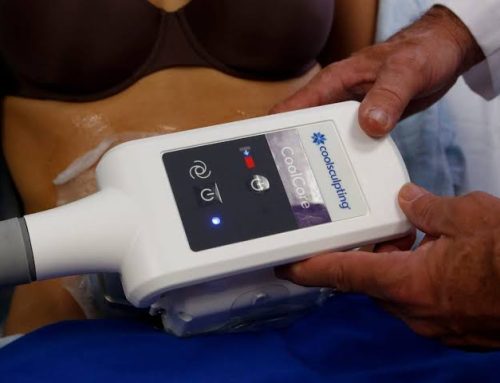Introduction
Experience facial rejuvenation with a facelift, or rhytidectomy. This surgical procedure removes excess facial fat, tightens muscles, and redrapes skin in order to achieve a smoother, firmer, and more youthful appearance. Whether it’s your face, neck, or both, a facelift can transform your look. Explore the details and remarkable results of this artful procedure as we guide you through the process, helping you put your best face forward with confidence.
What is the best age for facelift?
A facelift is typically not recommended for people under the age of 30. In most cases, this surgical intervention yields the most satisfying results for all in their 40s, 50s, and 60s when the telltale signs of aging begin to make their appearance. Deep wrinkles, fine lines, sagging skin, and other age-related changes are often best addressed through surgical means rather than non-surgical alternatives. However, it’s crucial to note that there is no universal age at which you should consider a facelift. Aging rates can vary significantly among all due to a variety of factors. Instead, the right time for a facelift is when you start to feel bothered by the visible signs of aging and non-surgical treatments no longer provide the desired results.

What is the best type of face lift?
There are several types of facelift procedures, each designed to address specific aesthetic concerns. The choice of which facelift is best for you can be determined during a consultation with a skilled surgeon.
1. Mini Facelift
The mini facelift is an excellent choice for those who require only minimal enhancement around the lower face. This procedure is ideal for all with minor signs of aging, making it a popular option for those in their late 30s and 40s. A mini facelift involves a minimal incision and boasts significantly reduced downtime compared to traditional facelifts.
2. Traditional Facelift
Often referred to as a full facelift, the traditional facelift is the procedure that most people associate with the term “facelift.” It is recommended for all with moderate to severe signs of aging in the midface and neck areas. This comprehensive surgery involves the removal and reshaping of excess skin and fat tissue, repositioning them to create a more youthful and rejuvenated appearance. A traditional facelift can produce dramatic, long-lasting results.
3. Neck Lift
For those, who are experiencing substantial signs of aging and sagging skin in the neck area, a neck lift is an ideal option. This procedure focuses on removing excess fat tissue and restoring the neck’s appearance to a more youthful and defined state. It is often performed in conjunction with a facelift to achieve a comprehensive facial rejuvenation.
4. SMAS Face Lift
The SMAS facelift is all about addressing those facial muscles that tend to sag with age. These muscles play a big role in how your face looks. Gravity, along with the weight of these muscles, can cause visible signs of aging. This procedure tackles both the surface layers of your skin and the deeper muscles in your face. By doing this, it delivers noticeable yet natural results. During an SMAS facelift, the surgeon will tighten your facial muscles in different ways, creating a customized, artful transformation that suits your unique facial features and goals.
5. Deep Plane Face Lift
The deep plane facelift is a highly effective and enduring facelift method. It goes beyond just addressing the skin; it targets the underlying layer of facial muscles responsible for sagging. By releasing and repositioning these muscles, it provides a firm foundation for your facial skin. This comprehensive approach results in not only tighter skin but also a more resilient structural base for your face. That’s why the deep plane facelift is renowned for its long-lasting outcomes.

What is the most natural looking face lift?
The SMAS facelift, or Superficial Musculoaponeurotic System facelift, stands out as a superior choice for achieving a natural and long-lasting facial rejuvenation. Unlike traditional facelift procedures that primarily address the superficial skin layer, the SMAS facelift goes deeper to target the underlying muscle and connective tissue layers. By addressing this foundational support structure, it produces results that not only look natural but also have remarkable longevity.
During the SMAS facelift procedure, a surgeon administers anesthesia to ensure patient comfort. They make strategic incisions to access the treatment areas, typically focusing on the neck, cheeks, jawline, chin, and forehead. The key distinction lies in the focus on the SMAS, a network of muscles and connective tissue responsible for facial support.
The surgeon releases a three-layer section of skin, allowing the SMAS framework to be tightened and repositioned. Any excess loose tissue is carefully trimmed away, and the incisions are meticulously sutured for optimal healing. The objective is to not only rejuvenate the facial skin but also provide a subtle yet natural lift to the overlying skin.
Compared to traditional facelift procedures, the SMAS facelift offers several advantages:
1. Natural-Looking Results: By addressing the underlying structural support of the face, the SMAS facelift achieves results that appear remarkably natural. It avoids the “pulled” or “windswept” look often associated with traditional facelifts.
2. Longevity: The effects of an SMAS facelift can endure for a more extended period, often up to ten years or even more. This longevity surpasses the outcomes of traditional facelifts, making it a cost-effective choice.
3. Accuracy and Safety: The SMAS facelift is known for its precision and safety. Surgeons can customize the procedure to each patient’s unique facial structure, ensuring optimal results.
4. Swift Recovery: Patients typically experience a faster and more comfortable recovery with the SMAS facelift, often requiring just one week before returning to their regular activities. In contrast, traditional facelifts usually demand two to three weeks of recovery time.
Conclusion
n conclusion, the ideal age for a facelift varies from person to person, and the choice of which facelift procedure is right for you depends on your specific aesthetic goals. To explore your options and determine the best course of action, schedule a consultation with a board-certified surgeon who specializes in facelift procedures. With their expertise and guidance, you can achieve the rejuvenated appearance you desire.
Disclaimer: The content on this blog is intended for general informational purposes only. It is not a substitute for professional medical advice, diagnosis, or treatment. Always consult qualified healthcare providers for personalized advice. Information regarding plastic surgery, dental treatment, hair transplant, and other medical procedures is educational and not a guarantee of results. We do not assume liability for actions taken based on blog content. Medical knowledge evolves; verify information and consult professionals. External links do not imply endorsement. By using this blog, you agree to these terms.










